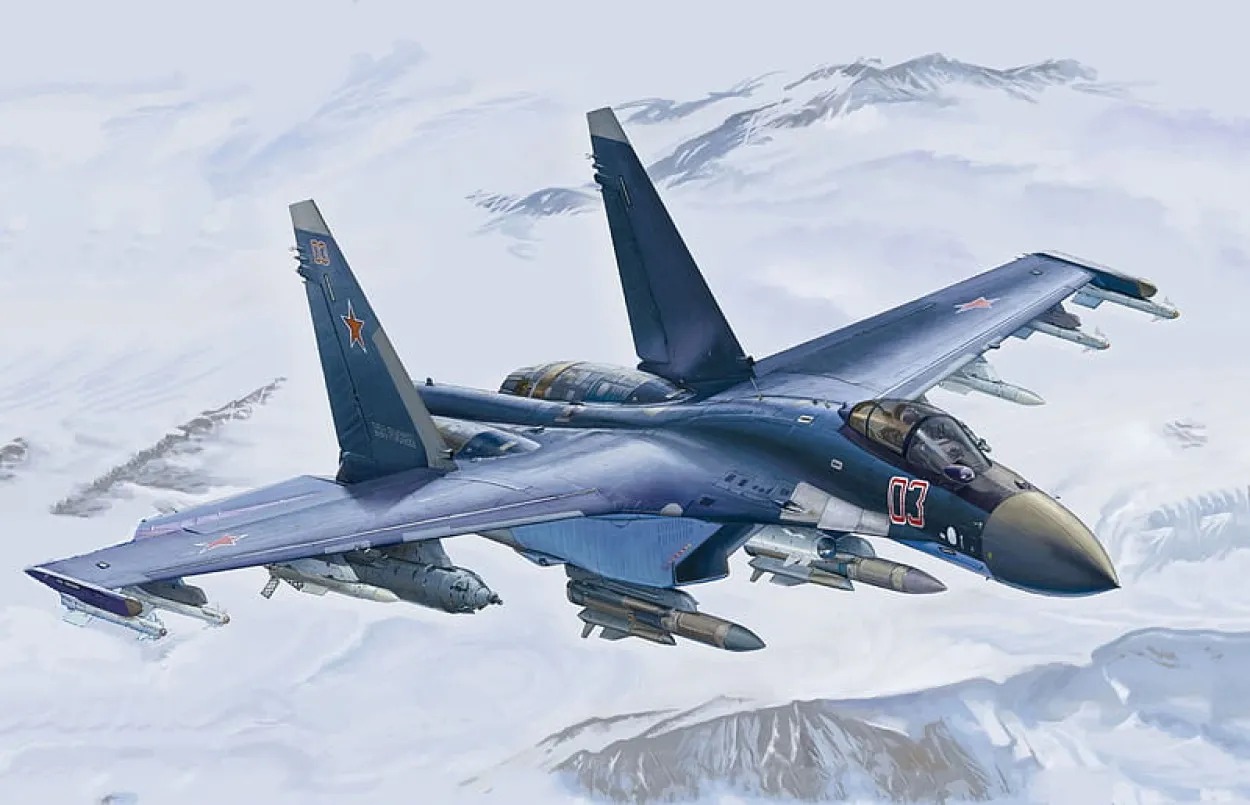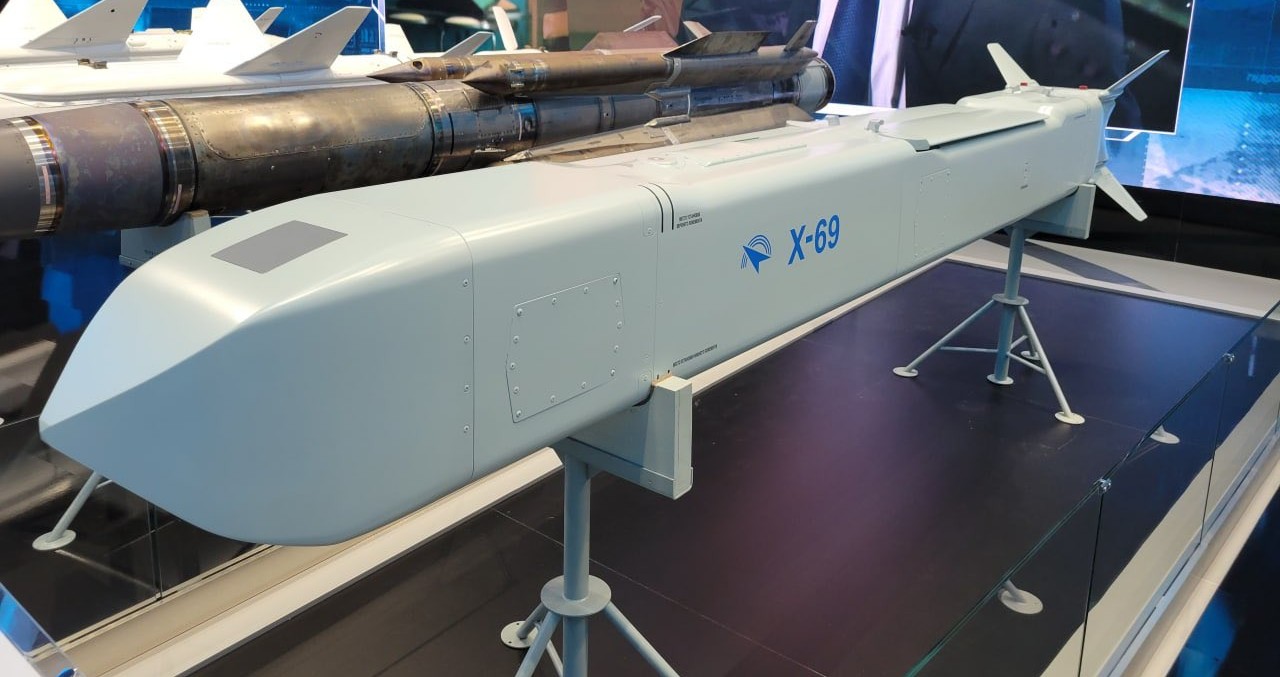Russia has begun using its new X-69 (also known as the Kh-69) long-range air-launched cruise missiles (ALCM). So far, Russia has used missiles like the heavier and much larger Kh-101, which is fired from the Tupolev Tu-160 strategic bomber, for its long-range missile launches into Ukrainian cities and deeper into the country.
A report by the Institute for the Study of War (ISW) said the Kh-69’s use is part of “continued efforts to improve strike packages and penetrate Ukraine’s degraded air defense.”
This was after Ukrainian media and Ukrainian Air Force Spokesperson Major Ilya Yevlash attributed the April 11 strike on the Trypilska Thermal Power Plant (TPP) in Kyiv Oblast to the Kh-69.
“ISW has not previously observed the Russian use of Kh-69 missiles in Ukraine. Russian forces have reportedly launched Kh-69 missiles from 400 km away from their targets, exceeding a previous estimated range of 300 km and the 200-km range of the most recent Kh-59MK2 variant,” wrote the ISW.
It added that Russian forces can reportedly launch the missiles from “more numerous Su-34 and Su-35 tactical aircraft rather than exclusively from strategic bombers.”
Besides the Tu-160, the other aircraft in this category are the Tu-22 and the Tu-95MS. Unveiled last year, the missile is also being pitched internationally, where the Indian Air Force could take a cue from the stand-off war evolving in Ukraine (and now Israel) and could consider acquiring it.
‘Russian Factories Can’t Mass Manufacture the X-69’
ISW also concludes that Russia’s arms factories may not be able to keep up with the need for the missile.
“While the Russian stockpiles and production capability of these Kh-69 missiles are unclear, Russia is unlikely to be able to produce them at a significantly greater speed or quantity than its other domestically produced missiles,” ISW added.
Major Yevlash, too, observed that the missile was “fresh,” “parts of which were manufactured in 2023,” but added that a lot also “depended on the success of its production” and how quickly Russia acquired “various semiconductors, chips, microcircuits, etc.… Of course, the Kh-69 missile is a new missile for us, so we are also studying how to counter it. It is most likely that the Patriot will also be able to (shoot it down) since it has also fought with more complex types of missiles, such as Zirkon (Tsirkon) and the Kinzhal,” he added. The last two are hypersonic missiles.
However, other think tanks have previously tabled an alternative view of the heavily sanctioned Russian defense industrial base. A June 2023 report by the Center for Strategic and International Studies (CSIS) outlined how it was “unrealistic” to expect Russia to ever run out of missiles.
“Sanctions and export controls can, at most, limit the quantity and quality of strike assets, Russia can acquire. “Russian production of higher-end cruise and ballistic missiles will never fall to zero. Despite Western sanctions and export controls of key microelectronic components, Russia has found workarounds to continue producing missiles,” the report said.
Moscow displayed the missile internationally. It unveiled the missile for the first time at the Dubai Air Show in November 2023. It would not have undertaken such a commercial endeavor — requiring mass production of the missile in the event of foreign orders — had its military factories not been up to the task.
A counter-argument could be Rosoboronexport (the sole state intermediary agency for Russia’s exports/imports of defense-related products, technologies, and services) pitching assembly or joint manufacturing of the missile with a Transfer of Technology (ToT) with the customer nation. Russia has a history of agreeing to foreign production of many of its defense platforms, especially in developing countries with reasonably reliable industrial capacities.
The X-69 Missile
The X-69 missile, meanwhile, aims to pack the destructiveness and precision of the Kh-101 and Kh-555 into a smaller and less observable size.
It has a flight weight of 770 kilograms, carries warheads of various types weighing 310 kg, and is said to have a range of 290 km. However, as mentioned previously, Ukrainians have now found it can reach distances of 400 km. The missile can be equipped with both penetrating high-explosive and cluster warheads.
It uses an inertial navigation system (INS) with course correction based on data from GLONASS navigation satellites during the cruising phase of the flight and an optical-electronic homing system “based on a reference map of the area recorded in the rocket’s memory,” said a report on Izvestia. This appears to be a map correlation/image referencing technology.
The combination of these guidance and seeker technologies provides incredibly high accuracy to the missile, with a Circular Error Probability (CEP) of less than five meters. Before launch, the missile can also be programmed to change direction and attack from a new angle while approaching the target. This can confuse medium and short-range air defense systems.
Interestingly, prototypes of the missile were designated Kh-59MK2 in honor of a version tested in Syria from the Su-57 aircraft. In February 2018, Russian Defense Minister Sergei Shoigu renamed the missile X-59, as it had technically fully matured and had evolved into an entirely distinct missile from its predecessor.
The missile has a rectangular cross-section and reportedly comes with radar-absorbent material to make it stealthy. This helps the missile to be placed in the internal weapons bay of the Su-57 stealth fighter. Also, the design reportedly aids in packing foldable wings, allowing the missile to maintain its stealth profile for some distance after it is launched from the aircraft.
Given that the missile can also be launched from the Su-35S and the Su-34, Russia needed a missile not as large and heavy as the Kh-101 that could also be operated from other smaller aerial combat platforms.
It spares the wear and tear of strategic bombers like the Tupolev Tu-160 while also giving battlefield commanders an alternative tool that they can use occasionally.

International Prospects
Russia is likely to further study the missile’s success and possibly introduce newer variants, or have improvements in new production batches, with a concurrent commercial push at future defense exhibitions.
It may sweeten the deal by offering to help fuse the X-69 (Kh-69) for countries already using the Su-30 or the Su-35S. Whether the missile has been designed to be fired from the MiG-29 or the MiG-35 is not yet known.
Good Option for the Indian Air Force
The MiG-35 and Su-35S are known to be contenders for the Indian Air Force’s (IAF) Multi-Role Fighter Aircraft (MRFA) project. The two are competing with other jets like Lockheed Martin’s F-21, Boeing’s Super Hornet F/A-18 E/F, Dassault’s Rafale, Saab’s JAS-39 E/F Gripen, and the Eurofighter Typhoon.

The air-launched BrahMos that has been tested from the IAF’s Su-30MKI fleet and possibly been fully integrated into its stockpile and operational plans weigh roughly 2.5 tons (2,267 kg). The Kh-69 (X-69) is 1,467 kg lighter at less than 800 kg and offers itself as a lighter, domestically produced (thereby logistically simpler) with sophisticated guidance, targeting, maneuvering, and air defense-evading capabilities.
In the event India does choose the Kh-69, it can also negotiate with Rosoboronexport to help fuse it with its Navigation with Indian Constellation (NaVIC) as the satellite navigation (SatNaV) system.
India’s Bharat Dynamics Limited (BDL), a public sector undertaking (PSU), already manufactures a host of indigenous missiles like the Akash SAM; NAG, MILAN-2T, Konkurs-M (Russia), INVAR anti-tank guided missiles (ATGMs); Astra air-to-air missile (AAM) and a host of naval torpedo systems.
Even a slightly prolonged war with Pakistan or China will involve long-range stand-off fires. The Kh-69, along with the BrahMos, can be a lighter, battle-tested, and comparably advanced addition to the air-launched cruise missile (ALCM) inventory.
Moreover, before Pakistan, India also possessed a significant satellite surveillance system for identifying targets in the rear that may comprise logistical nodes, supply lines, or hardened command and control centers.
- The author can be reached at satamp@gmail.com
- Follow EurAsian Times on Google News




